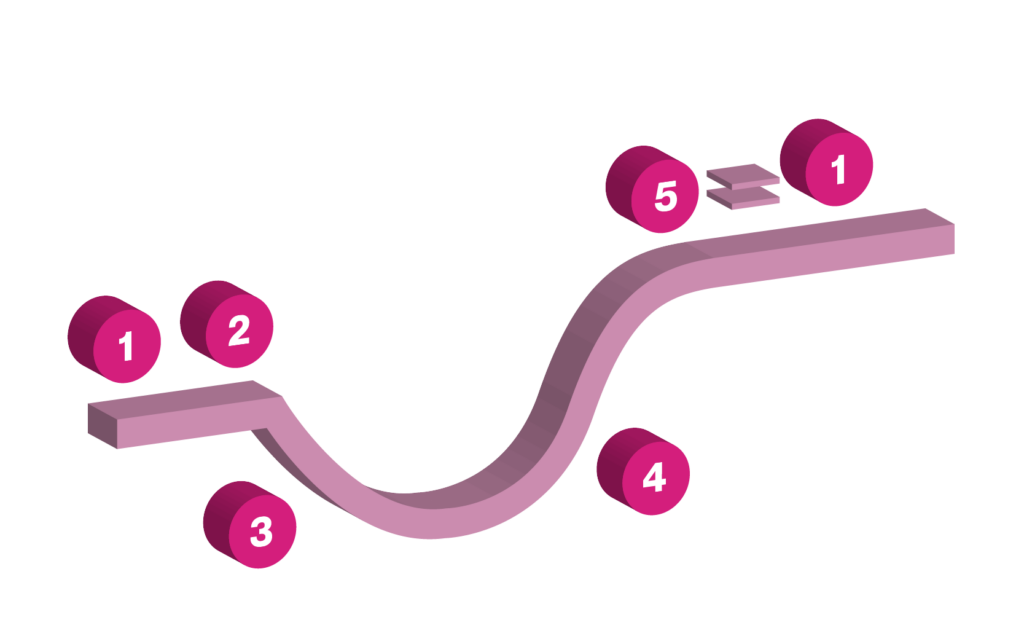Joseph Campbell was an American writer who left a profound legacy for filmmakers, communicators, and anyone dedicated to storytelling. In his well-known book, The Hero With a Thousand Faces, he explains the path every hero takes throughout his adventures and shows us that all the stories we know are variations of the same great theme: The Hero’s Journey.
The Hero’s Journey shows us several milestones along the protagonist’s journey that are present in all stories. From ancient Greek myths like The Odyssey to the newest Star Wars saga, Campbell showed that the pattern of these stories repeats time and again, no matter when, where, and who created the work.
Now, when we talk about a hero, perhaps what first comes to mind are words like “achievement,” “success,” or “winner” rather than learning, but a hero always must learn to push forward in his mission. According to the Royal Spanish Academy (RAE), the infinitive to learn means “to acquire the knowledge of something through study or experience,” which is not always easy and is a process that we often do not finish and set aside because we feel impatient or unmotivated. But it should be clarified that the development of learning is not linear. From the starting point to the desired endpoint is a large gap full of difficulties requiring much effort and patience.
According to Fred Kofman in the first volume of his work Metamanagement (2001), the learning process is very similar to that of the Hero’s Journey described in Campbell’s well-known work. The diagram below summarizes Kofman’s five stages of The Hero’s Journey, a path a person (or group of people) travels during their learning process:

The hero’s journey begins in stage 1, where they are calm in their comfort zone because everything is familiar and works perfectly, but “there are dark forces preparing to take power,” says Kofman. Situating ourselves in some area of learning, we can take as an example a person seeking to learn a new language, which arose from a need or simply to improve oneself. At first, everything looks hopeful: the hero or heroine looks for options, including institutions and costs, among others, and after selecting their choice, they buy everything they need and are ready to start. The promise of a future with a newly acquired skill is exciting, and despite the assignments, projects, and exams, it can’t be that complicated to learn a new language…right?
In the second stage, the hero’s doubts about themselves and their goals materialize. The problems that initially were only a thought have come true. It is the breaking point for our protagonist, who, trying to learn a new language, realizes they are failing their exams, has not completed their tasks, has not attended all of their classes, etc. Here, discouraging thoughts such as “I can’t,” “I will never understand this,” and “I am not good” begin to cloud our hero’s mind. They may start to give up and seriously think about dropping out of the course. “Stupor and self-forgetfulness is part of the hero’s downfall,” Kofman comments in his work.
However, in this second stage, an external factor or person can intervene to halt this negativity. In this case, encouraging words or ideas for improvement from a friend, teacher, or others can help the hero to reconsider, but perhaps they do not connect with their feelings, or the hero does not want to listen or believe what is said and continues in a state of disappointment and defeat.
Next, during stage three, the first battle begins against the most challenging and terrifying adversary: oneself. The hero or heroine must face themselves and overcome all those obstacles that prevent them from achieving what they see as impossible. Falling into the temptation of laziness and irresponsibility is the easiest resort, but one must fight to reach the final goal. Reflecting on oneself and fighting negative thoughts, assuming the consequences of one’s actions, and thinking of ways to solve the problems one faces in the learning process are essential to moving to the next stage.
Defeating this terrifying enemy gradually clarifies the panorama, but it is not time to claim victory. Another battle looming in stage four must be won – against external enemies. Thus, the protagonist, having assumed their responsibilities, must face and overcome those obstacles that made them stumble and doubt their abilities. In our example, this stage occurs when our hero takes control of their own learning, whether by attending all his classes, organizing his agenda, asking for advice, or going to group study sessions to improve his grades and understanding of the subject.
Stage five is the culmination of this tortuous path. Kofman explains, “Order has been restored, the crisis overcome, the unconscious energies integrated into consciousness.” After hard work and despite all the difficulties, the learning process is over for now. Our protagonist has completed their course and received a diploma recognizing the new skills acquired.
But is this the end of learning? As we can see, the fifth stage equals a 1 prime, which means that we return to the beginning at the end of this stage. Again, the hero is in their safe zone where everything works perfectly, and no danger is in sight…apparently. But new challenges, projects, and unknowns are lurking. To conclude with our example, maybe our hero is interested in taking level two of the language just learned or wants to explore a new subject, thus beginning a new adventure.
Let’s remember that learning is a never-ending process, and we must keep in mind that it will not always be easy; we need to have patience with ourselves to overcome all the obstacles this process has for everyone. The path is not linear. A gap separates the starting point from the desired ending point, and the reward is not instantaneous. Therefore, we must be aware and always keep in mind the objective to achieve what we propose and overcome all adversity that arises.
How about you? Can you apply this model to any of your learning experiences? Are you ready to start a new adventure?
Source: Kofman, F. (2001) Metamanagement Volume I. Naucalpan, Mexico: Ediciones Granica México S.A. de C.V.
Translation by Daniel Wetta
This article from Observatory of the Institute for the Future of Education may be shared under the terms of the license CC BY-NC-SA 4.0 
)
)


)